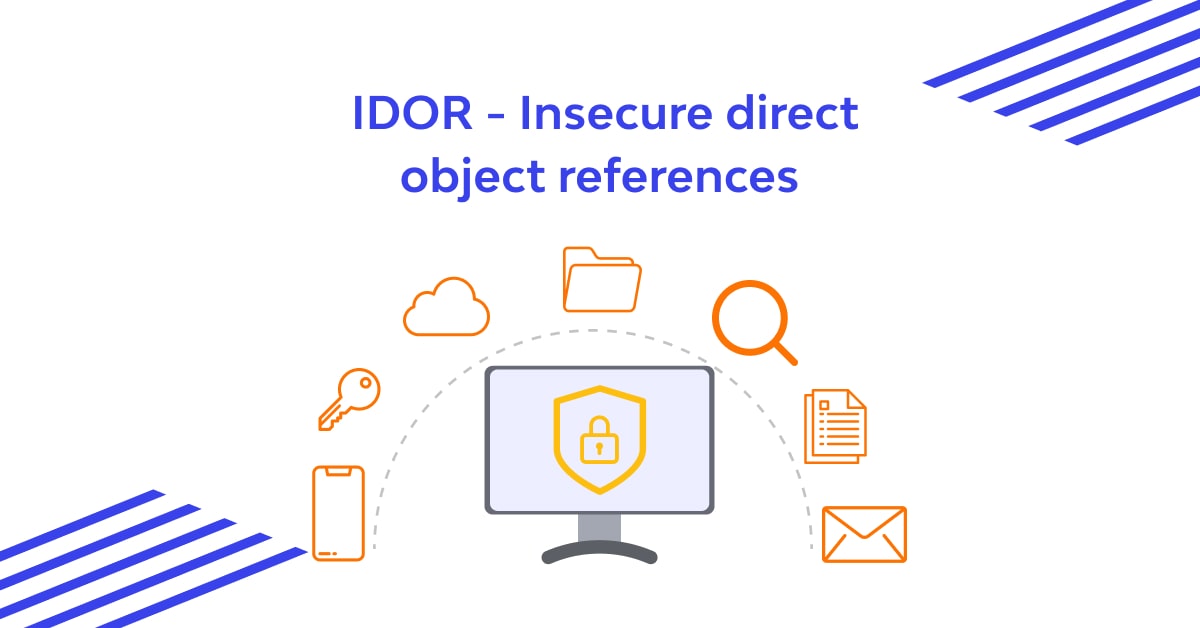
Insecure Direct Object References (IDOR) is a type of security vulnerability that occurs when a web application exposes sensitive information or allows unauthorized access to resources by directly referencing internal objects (such as database records, files, or URLs) without proper access controls. IDOR is a severe threat to web applications as it can lead to data breaches, unauthorized information disclosure, and potential manipulation of sensitive data. In this article, we will explore how IDOR vulnerabilities can be exploited by attackers and discuss best practices for preventing them.
Exploitation of IDOR Vulnerabilities
1) Identifying IDOR Points
To exploit an IDOR vulnerability, attackers first need to identify potential points within the application where direct object references are used. This might involve analyzing URLs, parameters, or hidden fields in forms to understand how the application handles requests and references internal objects.
2) Manipulating Object References
Once a potential IDOR point is identified, attackers attempt to manipulate object references to access unauthorized data or perform actions reserved for other users. They might change parameter values, URL parameters, or other input fields to access records or resources that should not be accessible to them.
3) Enumerating Resources
Attackers may also use automated tools to enumerate and guess resource identifiers to access multiple objects sequentially, potentially obtaining a large amount of sensitive data.
4) Exfiltrating Data
Once attackers successfully access sensitive information, they may exfiltrate it from the system to use for malicious purposes or sell on the dark web, leading to severe consequences for the affected individuals or organizations.
Prevention of IDOR Vulnerabilities
1) Implement Proper Access Controls
The most critical step in preventing IDOR vulnerabilities is to implement robust access controls for sensitive resources. Use role-based access control (RBAC) to ensure that users can only access resources and perform actions that are explicitly authorized for their role and level of privilege.
2) Use Indirect Object References
Instead of directly referencing internal object identifiers in URLs or parameters, use indirect object references. Employ a mapping layer that translates user inputs to internal object identifiers on the server-side, ensuring that users cannot directly manipulate these references.
3) Validate User Input
Always validate and sanitize user input to prevent attackers from injecting malicious data and tampering with object references. Implement server-side input validation and sanitize inputs to reject unauthorized requests.
4) Apply Session Management
Ensure that proper session management techniques are in place to prevent session hijacking and unauthorized access to resources. Use unique session tokens, enforce session timeouts, and invalidate sessions after logout or inactivity.
5) Employ Proper Enumeration Mechanisms
If it is necessary to allow users to enumerate resources (e.g., sequentially accessing different records), implement rate-limiting and CAPTCHA mechanisms to prevent automated enumeration and brute-force attacks.
6) Use Parameterized Queries
When interacting with databases, use parameterized queries (prepared statements) to prevent SQL injection attacks, which could be used by attackers to bypass access controls and gain unauthorized access.
7) Regular Security Audits and Penetration Testing
Perform regular security audits and penetration tests on your web application to identify potential IDOR vulnerabilities and other security weaknesses. Address any findings promptly and keep your application up to date with the latest security patches and best practices.
Conclusion
Insecure Direct Object References (IDOR) can have severe consequences for web applications, leading to unauthorized access, data breaches, and manipulation of sensitive information. By following best practices, such as implementing proper access controls, using indirect object references, validating user input, and performing regular security audits, web developers can significantly reduce the risk of IDOR vulnerabilities and enhance the security posture of their applications. Continuous vigilance and adherence to secure coding practices are vital in ensuring the protection of user data and maintaining user trust.




